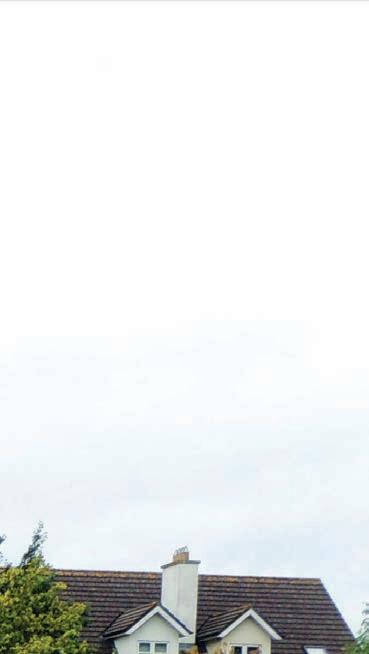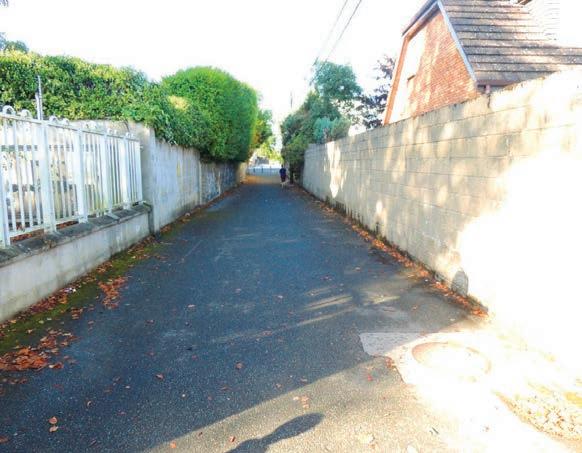
6 minute read
Gerry Cody

THESE notes were rst published in the R.S.A.I. Journal of 1872 by Patrick Watters. He describes Kilkenny City as greatly fallen o from the early 1800s. But there was one remarkable improvement and that was in the approaches to the City. “ e rising generation who, when travelling know only the luxury of the railway carriage and think it slow if it glides along at twenty miles an hour. ey cannot picture the days when the stage coach departed Kilkenny at eight o’clock in the morning and arrived in Dublin at six o’clock in the evening. e passengers if active were requested to get out and walk the steep hills at Ballitore and Killcullen. ese were then the days considered of easy travelling compared to the previous generation when there was not a daily conveyance. e road to Dublin ran through Magdalen Street up Windgap Hill, and the road to Cork through Walkin Street,when neither the Ormonde road or the Dublin road existed.”
Advertisement



Blackmill Bridge
is is an extract from the Presentments to the Kilkenny Assizes in 1714. “Whereas the greate roade from Limerick and Cashell to this citty within the Liberties is extremely out of repair and impassable in the Winter. We therefore do present the sum of irteen Pounds eight shillings and six pence to be raised on the four Parishes and paid onto Stephen Haydocke for paving of four hundred yards in length and four yards in breadth, at two pence per yard, beginning at the liberty post and ending at four hundred yards. at Stephen Haydocke and Matthew Knaresborough be over seers of the said work and that the Parish of St.Canice doe give six days labour for the same.”
Cashel being named as the terminus of a road from Kilkenny may seem strange to us now, but it was then an important city and in all probability the highway to the South. e road to Cork did not exist as it does at present. It was taken that this great road to Cashel began at Blackmill ,up by Kennys Well , Kilcreene, Drakeland over the hill at Ballycuddihy, and through Kilmanagh. It must have gone by Dama, for at a Presentment made at the Assizes in 1718.
“We nd that at the July Sessions in 1711, the sum of Five Pounds, six shillings, and ve pence was presented and then ordered by the Court to be raised in the four parishes and paid onto John Archdeckin for breaking and paving the Rock of Damagh. e worke being 284 yards at 4 pence per yard, and the said sum was paid to Mr. Robert Connell, the then Public Receiver, is still in his hands and not paid to John Archdeckin though the work is completely nished.” At the 1718 Assizes the Presentment was made for the Blackmill Bridge which xes a de nite date for the bridge. “Whereas the foot bridge of timber, near the Blackmill over the river Bregagh is in the winter and especially in the time of great ood very


e Kilkenny Observer newspaper, with the assistance of Cois Céim and e Kilkenny Saturday Walkers group, takes a look at the approach roads to Kilkenny in the 18th Century. is is part 1 of a three part series.
In week 1, we look at the roads from Limerick and Cashel, and the old Colliery road from Castlecomer


The great road to Cashel began at Blackmill ,up by Kennys Well , Kilcreene, Drakeland over the hill at Ballycuddihy, and through Kilmanagh.






Blackmill Bridge , superbly captured in an oil painting by Kilkenny man Vincent Morton
A Presentment made in March 1769 “for repairing part of this road from this City to Castlecomer, between the Glinn on the lands of Glandine
dangerous for passengers and travellers who go on the same. We therefore present that the sum of ve pounds be forthwith raised in throughout this City and County thereof and paid unto Ebenezer Warren and Edward Evans for and towards the building and new making of two su cient arches , with lime and stone, over the said river with side walls thereon three high and two foot thick. e said bridge to be ten foot wide in the clear from side to side. Who are t persons to see the same done accordingly.”
Old Colliery road to Castlecomer
is Presentment was made in April 1718. “We nd the old pavement on the High Road leading from the Coal pitts to this Citty, in the parish of St. John beginning at the Liberty post and so forward to the Shrahan Sanny to be much out of repaire and unpassable for Carryers and Travellers who go the said road. erefore Present that the sume of ve pounds be forthwith raised in and throughout the four parishes for the paveing and gravelling and well amending the same beginning and ending at the places aforesaid and paid unto Oliver Cramer and James Davis who are t persons to see the same done accordingly.” e following informs us exactly where Shrahan Sanny was and is. A Presentment made in March 1769 “for repairing part of this road from this City to Castlecomer, between the Glinn on the lands of Glandine and the brook called Shroughan Sunny on the lands of Ratesland Stopford” A Presentment made in April 1772 to repair part of the ”Road leading from this City to Castlecomer , between Nowlan’s gate on the lands of Glandyne and Shroughane Sunny Brook. e brook can still be seen today, more than 300 years since it was rst noted. At the Lent assizes of 1817 a presentment was made that the commissioners were to form, fence, level and make 194 Perches of the new intended Mail coach road between Kilkenny and Kilcullen bridge through Castle comer and Athy commencing at Johns Green near the new Military Barracks and ending at James Nowlans bounds on the lands of Glendine. at a cost of £351/15/4d. One twelfth to be raised at this Assizes and at each succeeding assizes until all is raised.
the Liberty post and so forward to the Shrahan Stopford” A Presentment made in April 1772 to repair
PART TWO NEXT WEEK




















